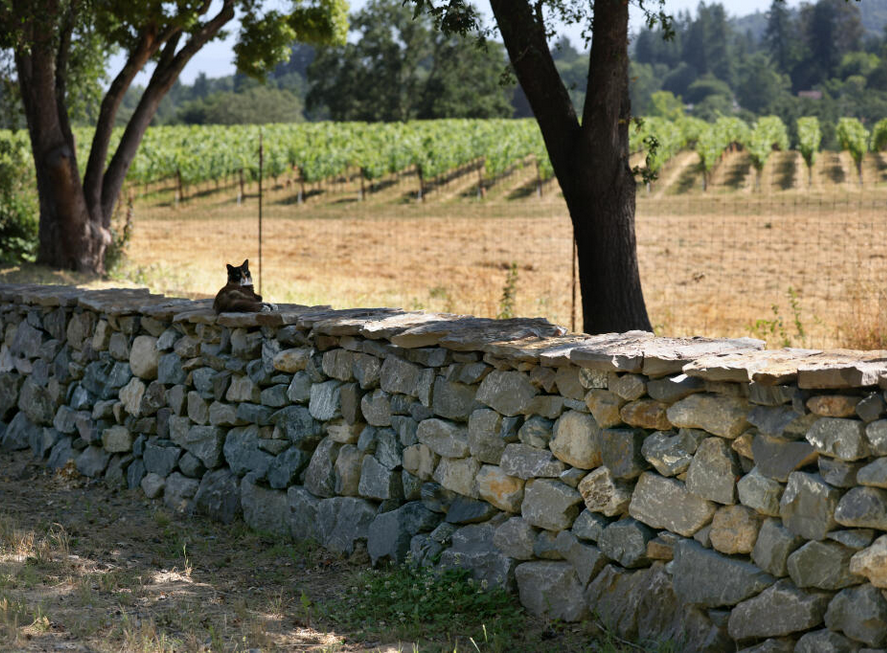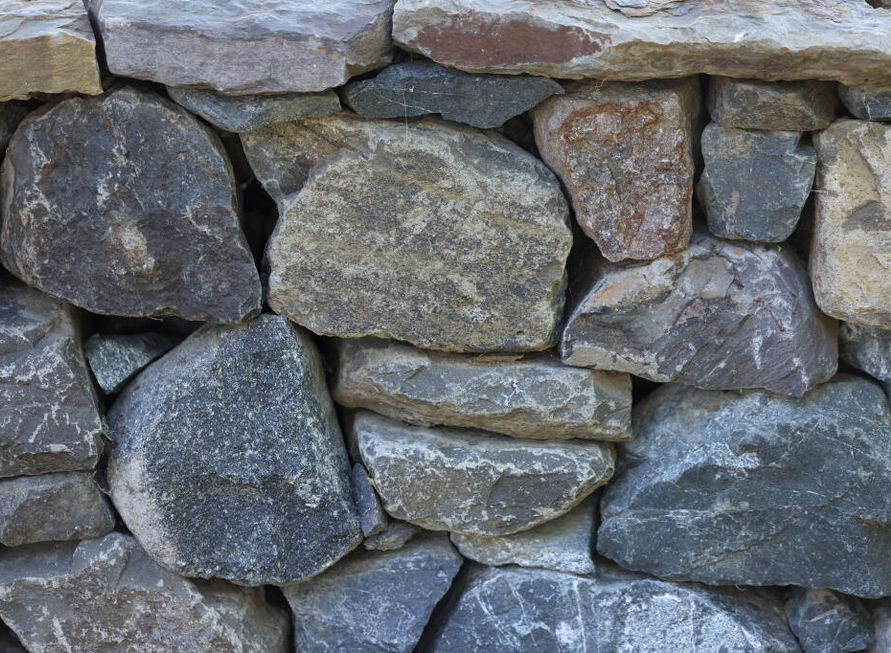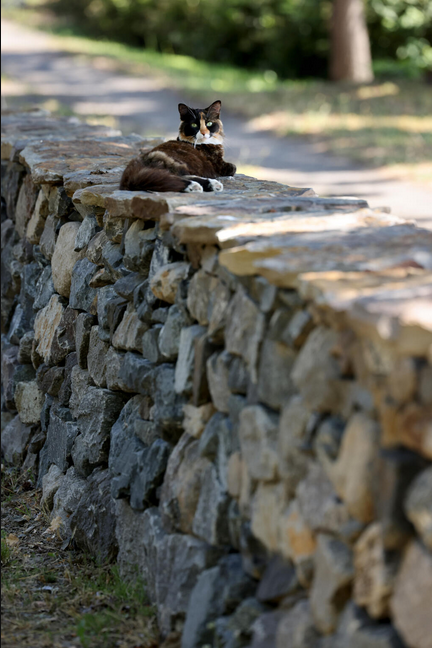In Europe dry stone walls are an indelible part of the landscape. In the U.K. alone, there are an estimated 74,000 miles of stone walls, all built without mortar or rebar.
 Landscape designer Christa Moné in Forestville, California first became aware of these ancient structures when she was living and working in France. “I helped do a few repairs on walls when I was living there,” she said. “But I didn’t think much of it. They were just a part of the environment I was working in.”
Landscape designer Christa Moné in Forestville, California first became aware of these ancient structures when she was living and working in France. “I helped do a few repairs on walls when I was living there,” she said. “But I didn’t think much of it. They were just a part of the environment I was working in.”
Since 2009, she has dedicated herself to creating high-end landscape and exterior design. Her particular passions include reviving the tradition of dry stone walling. “I just sort of fell in love with the look of them and how they’re built. I feel a strong connection to stone and it has always been a part of the landscapes I really love,” she said.
 The above wall, similar to those built in the old days as livestock fences, sits overlooking a vineyard, as if it had been there for generations. It attracts wildlife like small lizards who love warm stone and birds looking for grub. Her cats love to leap and lounge upon it.
The above wall, similar to those built in the old days as livestock fences, sits overlooking a vineyard, as if it had been there for generations. It attracts wildlife like small lizards who love warm stone and birds looking for grub. Her cats love to leap and lounge upon it.
“A peacock moved in and spends all his day sitting on top of the wall and calling across the valley,” Moné said as the bird once again approached its perch on a recent June morning, screeching and making its presence known. “Before this was here it didn’t come over here. It’s really incredible the habitat the walls offer. They create these little microclimates. The walls are heat sinks.”
 Stone walls also act as fire breaks, which is so important to the wildfire prone North Coast, she said.
Stone walls also act as fire breaks, which is so important to the wildfire prone North Coast, she said.
Moné would like to see more local landscape workers trained in the art as taught by The Stone Trust. The Vermont-based nonprofit, founded by four builders who went to England to learn from the masters, aims to preserve and advance the craft of dry stone building in the U.S. through education, workshops and certification. “Masters aren’t just stacking stones,” Moné said. “They’re doing it using very particular set of techniques that will give the wall the durability to withstand time and weather.”
The process can be used to make a variety of stone structures from steps and retaining walls to patios. Moné is using rip-rap strength stone from a quarry right down the road, adding to its environmental sustainability as a building product.
You can read the original article at www.pressdemocrat.com

